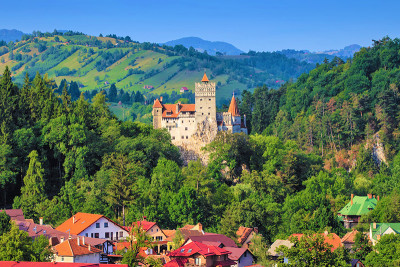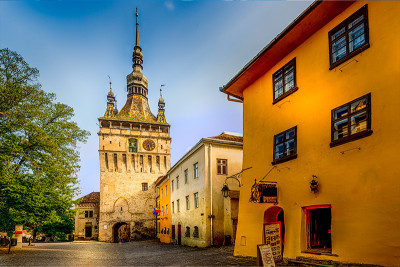Arad is located in the western extremity of Romania, in the High Plain of Arad, 30 km from the Zarand Mountains, part of the Western Carpathians. Crossed from east to west by the Mures River, it includes a natural lake in the forest area.
Arad is the most important node of the national and trans-European road and rail transport networks in western Romania. It is included in the Pan-European Corridor IV, which links Western Europe to the countries of South East Europe and Central Asia.
Filarmonica
The Conservatory of Arad, the first conservatory on the territory of Romania and the sixth in Europe, is established. It attests to the extremely important role of music in the cultural life of Arad, at the beginning of the nineteenth century.
Franz Liszt concerts in Arad, in the festive hall of the “White Cross” hotel. Arad is the third city in the country where he concerts the great composer in his last tour, being quickly received by the public in Arad, who received the honorary diploma of the citizen on November 10th.
The performances of the Orchestra and the Arad Philharmonic Chorus begin abroad. So far, the Arad Philharmonic has performed concerts in countries such as the Netherlands, Poland, Germany, Switzerland, Italy, Hungary, Spain, Austria, USA.
Hall
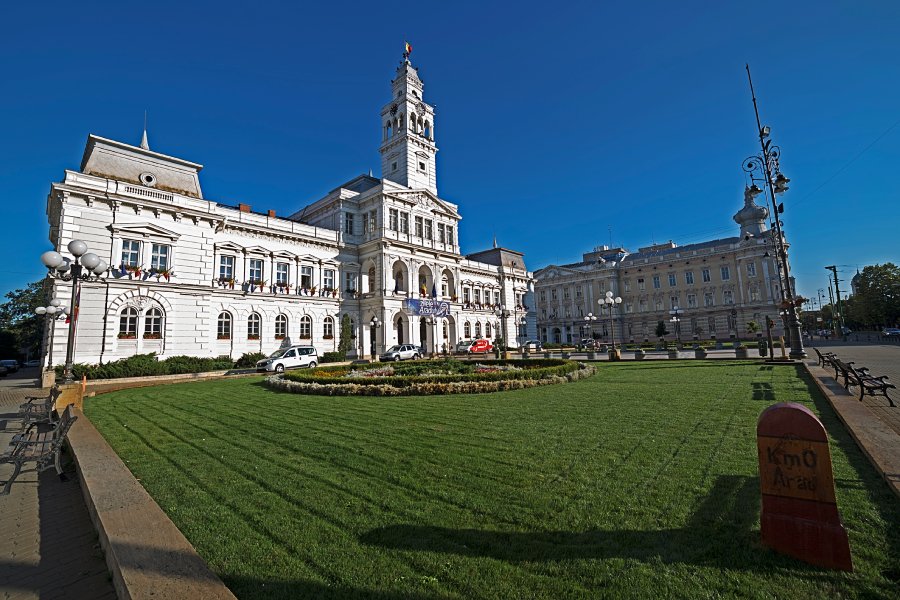
The administrative Palace of Arad was built between 1872 and 1876 and inaugurated in 1877 when finishing the festive hall. The 4,320 sqm land to be built was initially owned by Salin Office.
Budapest’s architect Odon Lechner won the international contest for the design of the new Arad City Hall, being selected from the 17 participating architects. The project underwent various modifications during construction, for financial reasons.
The 90 original rooms used as offices were occupied by 167 administrative officials. Upstairs, in the large hall with a balcony, the meetings of almost 200 municipal deputies took place.
The Palace Of Culture
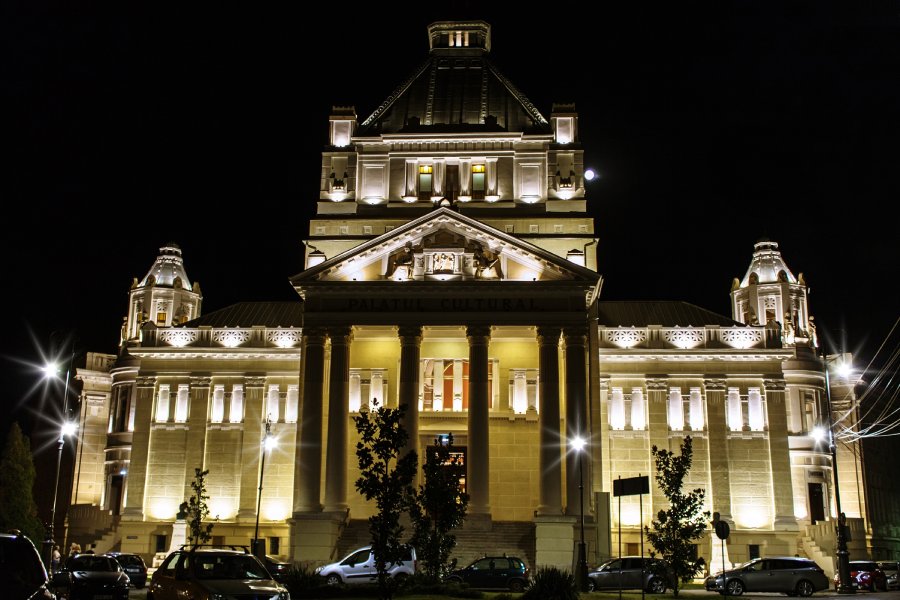
The construction of the edifice was initiated in 1901 by the Kölcsey Cultural Society in Arad, which started to build a building to house the local museum, the city library, and a concert hall. At the same time, the creation of an art gallery was also planned.
Architect Arad Ludovic Szántay was assigned to execute a building plan. The current site was chosen and, after final approval, preparations for the construction of the Palace began. For lack of funds, the works stagnated until 1910. In the autumn of 1912, the construction of the Palace was over, and some of the museum’s collections had already been moved to the new premises of the building.
The festive inauguration took place on October 25, 1913. On this occasion, the Arad City Philharmonic was invited for a festive symphonic concert in the grand hall of the Palace, a concert which included pieces by great composers such as Schubert, Goldmarck, Bizet and Beethoven.
The Lutheran Evangelical Church (The Red Church)
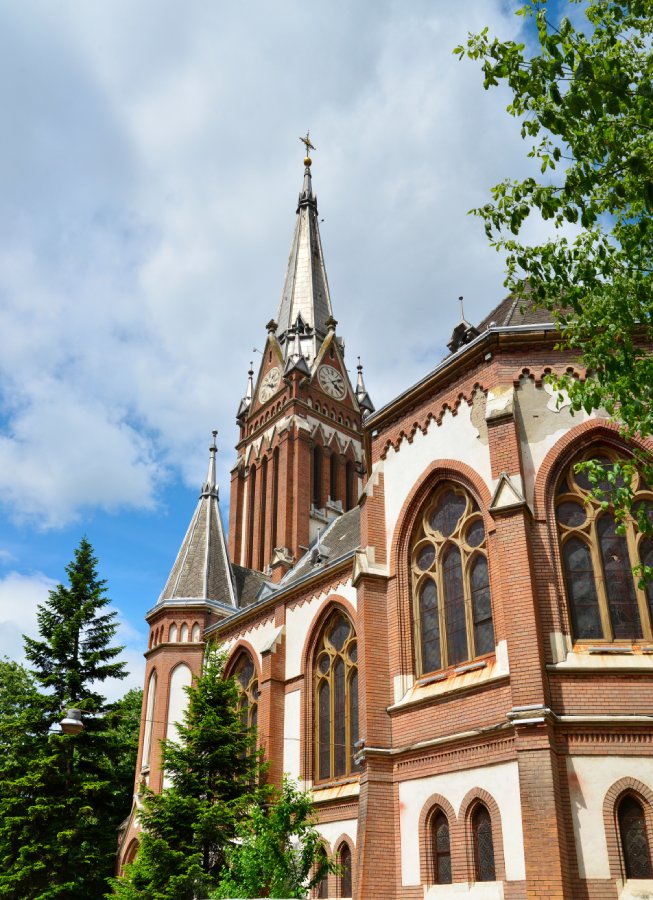
The Lutheran Evangelical Church in Romania arose after the Great War (1914-1918), which is constituted by the Lutheran evangelical believers from the Transylvanian and Banat regions. Arad, being a city center of this cult for some time, has such a Lutheran evangelical church.
The Lutheran Evangelical Church has a foundation stone built in March 1905, and the construction of the church was completed in September 1906. The ceremony of the sanctification of the building took place in the presence of Bishop Samuel Sarany.
The edifice was built by the entrepreneur Jozsef Frick, according to the drawings of the architect of the country, Ludovic Szantay. The building is located in Luther Square, on the main city traffic axis.
Classic Theatre Ioan Slavici
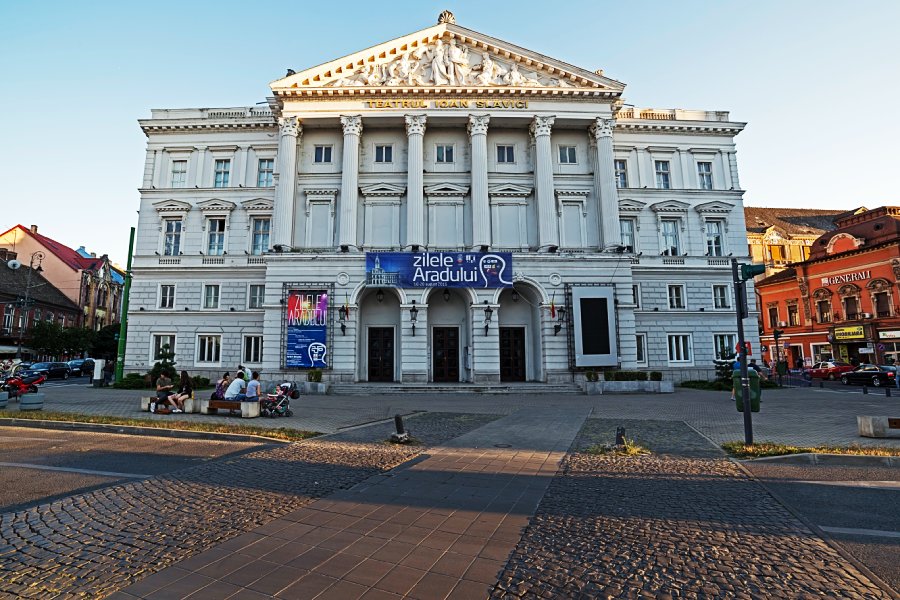
The impressive building was built in the nineteenth century, following the Austro-Hungarian understanding, which raised the issue of building a new theater in Arad with a larger capacity. Thus, at the beginning of 1870, the city’s leadership decided to contract the sum of 700,000 florins from a Viennese bank for the construction of new buildings: the theater and the city hall.
The project of the theater building was developed by the architect Skalniczky from Pesta, and the interior architecture belongs to Gyorgy Bako. Several Arad entrepreneurs were involved in the actual construction. The construction of the building began in 1872 and ended in 1874, the year when the first performances took place in the newly inaugurated theater. The hall had three floors, structured in a gallery and 92 lodges.
There were 276 chairs on the ground floor, plus 150 standing stalls, on the first and second floors there were only lodges, and on the third floor was a balcony with 72 seats and a gallery with 170 seats. In total, the hall had a capacity of 1,250 seats. The artists and craftsmen from Vienna, Budapest, and Arad worked in the room decoration.
The lighting of the room was made with a chandelier with 36 chandeliers, similar to that of the Vienna Opera, and the ground floor was supplied with gas. On 18 February 1883, due to a failure of the lighting system, the building of the theater burned almost entirely.
After this fire, the Municipal Council decided to rebuild the theater on the old site, using different parts of the building that survived the fire. From 1874 until the First World War, theatrical performances were performed by local bands, as well as by some of the most famous troops of the time.
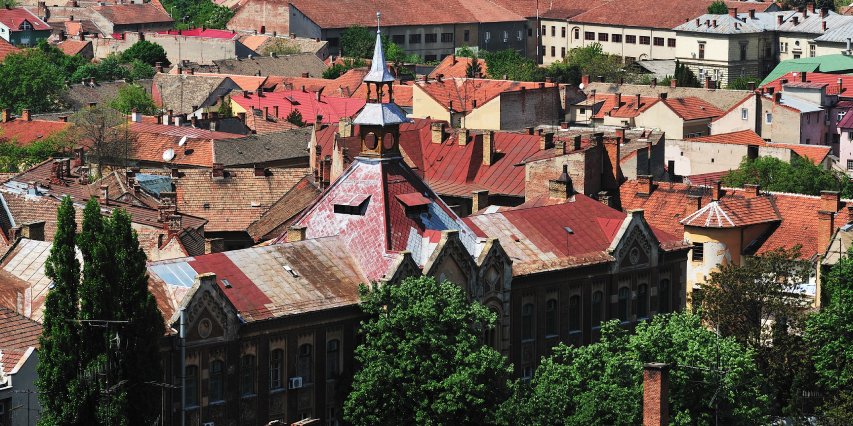
 ES
ES
 IT
IT
 DE
DE
 FR
FR
